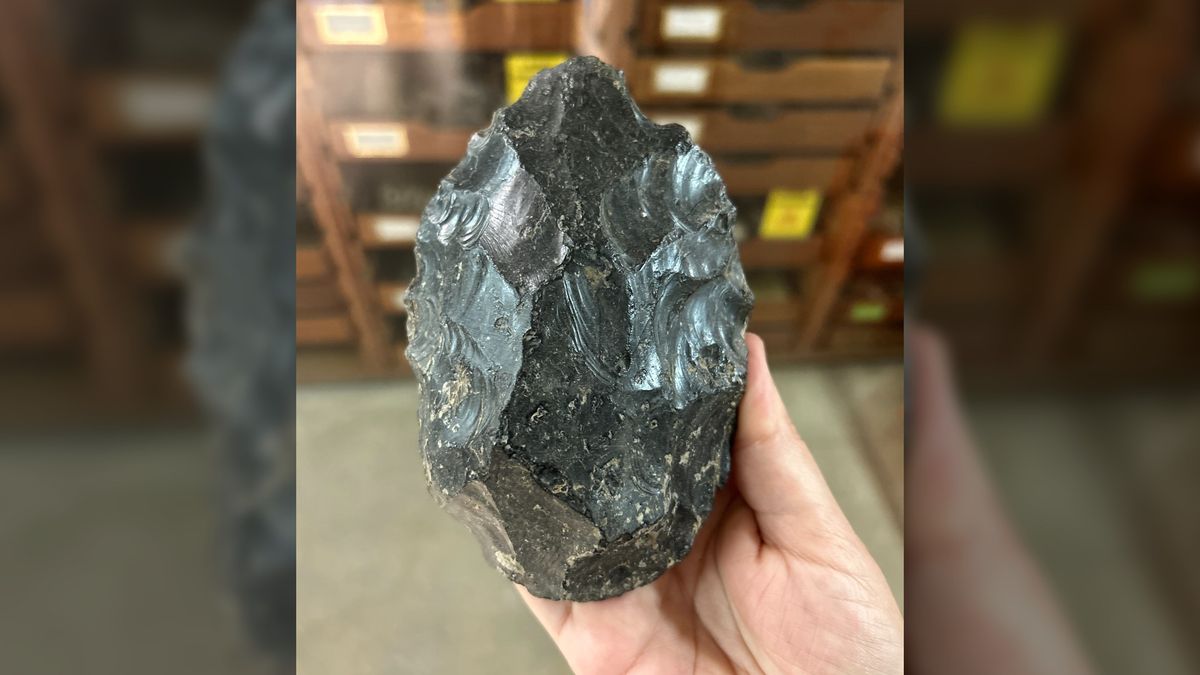Science
Related: About this forumMassive, 1.2 million-year-old tool workshop in Ethiopia made by 'clever' group of unknown humans
An unknown group of hominins crafted more than 500 obsidian hand axes more than 1.2 million years ago in what is now Ethiopia. More than 1.2 million years ago, an unknown group of human relatives may have created sharp hand axes from volcanic glass in a "stone-tool workshop" in what is now Ethiopia, a new study finds.
This discovery suggests that ancient human relatives may have regularly manufactured stone artifacts in a methodical way more than a half-million years earlier than the previous record, which dates to about 500,000 years ago in France and England.
Because it requires skill and knowledge, stone tool use among early hominins, the group that includes humans and the extinct species more closely related to humans than any other animal, can offer a window into the evolution of the human mind. A key advance in stone tool creation was the emergence of so-called workshops. At these sites, archaeologists can see evidence of hominins methodically and repeatedly crafting stone artifacts.
The newly analyzed trove of obsidian tools may be the oldest stone-tool workshop run by hominins on record. "This is very new in human evolution," study first author Margherita Mussi(opens in new tab), an archaeologist at the Sapienza University of Rome and director of the Italo-Spanish archeological mission at Melka Kunture and Balchit, a World Heritage site in Ethiopia, told Live Science.

An obsidian hand ax crafted by an ancient human relative more than 1.2 million years ago. (Image credit: M. Mussi et al.)
https://www.livescience.com/massive-1-million-year-old-tool-workshop-in-ethiopia-made-by-clever-group-of-unknown-human-relatives
Effete Snob
(8,387 posts)That axe looks like a decent saw and knife.
xocetaceans
(4,014 posts)Springer Nature offers the paper in a open viewing form at the following link;
A surge in obsidian exploitation more than 1.2 million years ago at Simbiro III (Melka Kunture, Upper Awash, Ethiopia)
Margherita Mussi, Eduardo Mendez-Quintas, Doris Barboni, Hervé Bocherens, Raymonde Bonnefille, Giuseppe Briatico, Denis Geraads, Rita T. Melis, Joaquin Panera, Laura Pioli, Andrea Serodio Domínguez, Susana Rubio Jara
Received: 1 February 2022
Accepted: 6 December 2022
Published online: 19 January 2023
Pleistocene archaeology records the changing behaviour and capacities of early hominins. These behavioural changes, for example, to stone tools, are commonly linked to environmental constraints. ....
https://www.nature.com/articles/s41559-022-01970-1.epdf?sharing_token=lafCCsHHzzWESA7sSuGX7NRgN0jAjWel9jnR3ZoTv0NGmuX0lR0PD9NHM-U5P9w1k72oVvbMm7gEpl_5Bp2o2TBsd05wHi4R0I6o8cjdmKC6hCsy3MD6bxCPnEg8vo7mwfvT472zV07DscOFWcyjy4p-sauNj74PScVUcaDeAfke35GidiboWbTLO5LsC0KpqGq8CMpTPTyJRO6WGjqd2le_aZiMeDlr4jMAzajm_dU%3D&tracking_referrer=www.livescience.com
That link is located at the end of the Live Science article but is in this condensed form;